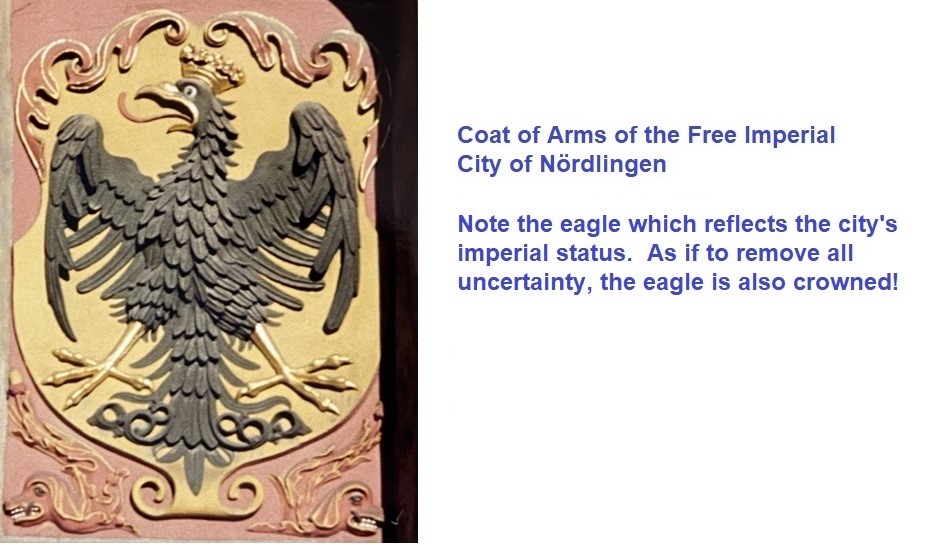Eagles
Eagles also existed in Bavaria’s coat of arms, but only for a short period of time. This is because eagles are typically reserved as an imperial symbol while lions had no such restrictions. This means that whatever place the Emperor hails from has the right to put the eagle on their coat of arms. In practice, it also meant that Imperial Free Cities, which are beholden only to the emperor and not a duchy or other type of domain, would have the right to include the eagle on their coats of arms. For instance, Nördlingen, while being situated within Bavaria, was granted its Free Imperial City status in 1215 by the Emperor Friedrich II and therefore has a black eagle as its coat of arms.
Regarding Bavaria’s usage of an eagle, this appeared on the coat of arms when Charles VII became the Holy Roman Emperor in 1742. Hailing from the House of Wittelsbach, this designated the first time the throne was held by someone other than a Habsburg in over 3 hundred years.
With the recent death of Queen Elizabeth II, images of her casket draped in arms featuring lions highlight the fact that other countries do not follow the same rules, as her royal coats of arms feature a single lion representing Scotland and a trio of lions (which are strikingly similar in appearance to the Staufer lions) representing England.

